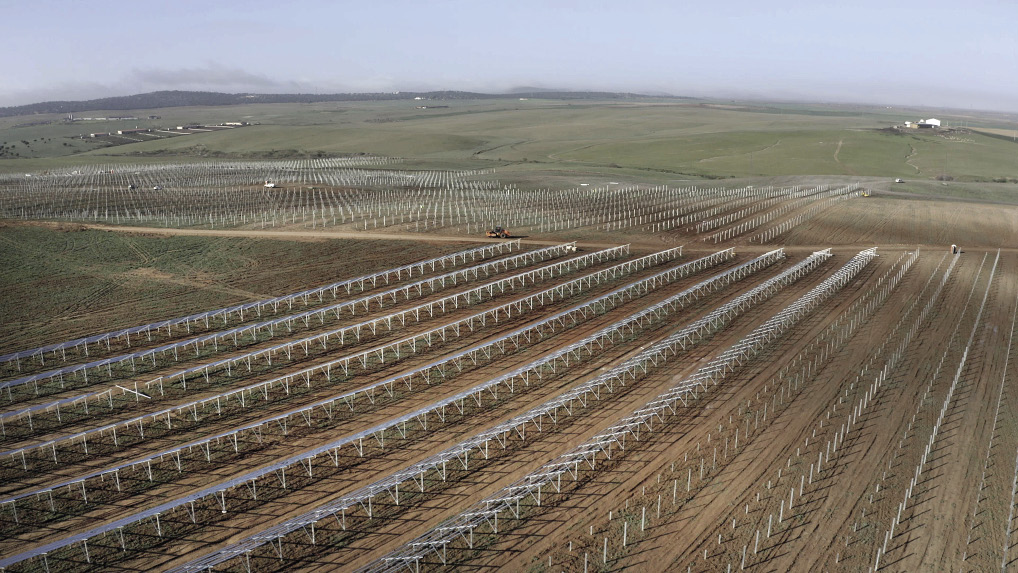From pv magazine Global, May edition
The two energy ministers in the government of Mariano Rajoy will be best remembered for their controversial measures and proposals, such as bringing in the sun tax, gifting the electricity oligopoly enormous power, hugely facilitating fracking, and proposing sweeping cuts to renewables’ remuneration that reduced the returns generated by plants already in operation before the electricity sector reforms (practically every facility in Spain) from 7.39% to 4% or 5%.
Outlook: sunny
As soon as it took over the reins almost one year ago, the new government made its intentions clear, creating the Ministry for Ecological Transition as a visible manifestation of the complete change of approach to renewables. It abolished the sun tax, recognized the right to shared self-consumption, defined mechanisms to compensate surpluses and simplified the accompanying paperwork.
The biggest shift in attitude came with the adoption of the Integrated National Energy and Climate Plan (PNIEC), which provided for mass deployment of renewables. In fact, by 2030, renewables are required to account for 42% of all final energy consumption and, in the electricity sector’s case, 74% of all electricity produced must be generated by renewable technologies.
That works out at 88,000 MW of wind and photovoltaic power by that date. For PV, it means an increase of 3,000 MW per annum, which is precisely the amount that the government has committed to auctioning each year.
… with scattered clouds
But, will it be possible to install 3,000 MW of new solar capacity every year through to 2030 and annually allocate the PNIEC the €4 billion of public money the measure requires? Spanish photovoltaics association UNEF (Unión Española Fotovoltaica) believes that “the sector has the will and capacity to invest in and develop 37 GW of PV by 2030.”
However, that will and capacity depend on political stability and the private investment that accompanies it, particularly since the latter will need to provide 80% of the €238 billion needed to achieve the PNIEC’s 2030 targets.
It’s not failure to achieve the PNIEC’s optimistic goals that concerns the Spanish renewables sector, but the regulatory instability a change of government would bring. Pedro Sánchez called the country to the polling stations because he wasn’t able to convince Parliament to pass the general state budget. A general election will be held on 28 April.
Worth the paper it’s printed on?
While the present government’s measures aim to place Spain at the forefront of the battle against global warming, some of its political rivals are echoing U.S. climate-change deniers: extreme-right party Vox, which in the recent regional elections in Andalusia took a not insignificant 11% of the votes, talks about a “climate con” and has adopted the slogan “Make Spain great again!” Sound familiar?
UNEF is calling for calm. Its Chief Executive, Jose Donoso, stated at the Genera trade show that the sector faces little threat of post-April regulatory change as it is protected by three “defensive shields”: the EU directive, PVs’ indisputable competitiveness, and widespread societal support. “The country wouldn’t comprehend a decision to backtrack at this stage,” he said. Spain’s electricity lobby also exudes optimism, as it has seen that solar PV is profitable and it wants a slice of the pie.
This extends as far as the Chair of football club Real Madrid and head of construction company ACS, Florentino Pérez, whose energy infrastructure firm, Cobra, is behind some of the country’s biggest roll-outs, among them an 850 MW facility in Aragon and the approximately 500 MW Mula plant in Murcia.
Popular content
PPArty!
One sector in particular is unafraid of the election results. That’s because in a matter of months the country has gone from celebrating construction of the first unsubsidized plants to Spain becoming one of the world’s hottest PPA market following deals involving over 2,000 MW. It’s almost as if there were a race to sign the first, biggest, and longest agreement. Just about every week, Spanish banks like BBVA, La Caixa, Bankia, Santander, and Sabadell finance a megaplant boasting output that is secured by a PPA. Meanwhile, investors like InfraRed, Northleaf, Cox, and Aquila are racing into the market, and their national counterparts who emigrated in the wake of the cutbacks are now returning. Foreign firms are opening offices where the sun shines strongest and new EPC contractors are popping up left, right, and center.
“We’ll invest €955 million to grow renewables in Spain,” says Naturgy. Is that all? Well, “we’ll invest €5.5 billion through to 2020,” states Endesa. “And we’ll spend €8 billion by 2022”, retorts Iberdrola. Any advance on that? Let’s hope that the wave of PPAs doesn’t unleash a tsunami.
Auctions to curb PPAs?
Some industry voices warn that investors are buying projects that aren’t yet off the drawing board and don’t have the necessary permits, let alone anything solid to back them up. It may be that a financial bubble is swelling in the renewables sector, especially since there are even cases of two projects under early stage development at the same site. “At the moment, there are more connection applications than the grid is capable of handling,” says Miguel Duvison, Chief Executive of Red Eléctrica de España, the group that manages the country’s high-voltage and electricity transmission infrastructure. He added that access has already been approved for 84% of the power needed by 2030.
The PPA market stopped dead in its tracks in November last year when the government revealed its intention to change the auction mechanism and launch calls for applications for 3,000 MW per annum. Many investors have reiterated at conferences, lectures, and panel sessions that they prefer auctions: Although the prices don’t beat those available in the market, auctions do facilitate project financing and the associated administrative procedures.
While there’s no prospect of auctions in the near future, the government does plan to change the bidding mechanism for the incentives designed to encourage investment in plants over their service life. The new law states that successful bids will be awarded on energy generated, not capacity, as was the case until now. This is aimed at reducing program costs.
“The remuneration agreements will be awarded by competitive tender in which the product auctioned will be the electricity generated, and the variable on which the bid will be based will be the remuneration for energy.” In other words, the tenders will be won by those producers which generate electricity at the lowest cost.
Is there enough to go round?
It looks like there is. And if space on the ground runs out, there are still rooftops, both C&I and residential. At the end of March, Solarwatt España, the Spanish subsidiary of the German integrated self-consumption system manufacturer, published the first report on the outlook for Spain’s residential market segment, based on self consumption models. According to the study, this segment could grow to as much as 1,500 MW in the next three years.
Meanwhile, Seville’s The South Oracle has launched the first sIberdrolaolar electricity tariff in Spain: It offers seven self-consumption options under a flat rate for the residential market and sells custom-built solutions for retail and industry. The company takes care of everything: a needs analysis, design, and installation which, in the case of a regular residential systems, takes under two days. Users have to commit to the contract for 10 years, during which the price remains unchanged: €0.125/kWh for the first 15 kW and guaranteed savings of up to 30% from that figure onwards.
Furthermore, for consumers who want to protect the environment but aren’t willing or able to install a self-consumption system at home, electricity company Podo offers a personalized flat rate that links the customer to a 100% renewable project — the company will buy the output of one newly built 10 MW photovoltaic plant for every 5,000 customers who sign up for the rate.
Are we on the eve of a revolution, or simply seeing another renewables boom in the offing? Only time will tell.
This content is protected by copyright and may not be reused. If you want to cooperate with us and would like to reuse some of our content, please contact: editors@pv-magazine.com.



All countries should take such drastic measures to ensure the energy of the future is clean. We must eliminate our carbon footprint at all costs. Let’s all follow the same path Spain is taking, this may be the only solution to climate change.
Since this was written, Spain has held both parliamentary municipal and European elections. Sanchez’ PSOE did modestly well and does not need the impossible Catalan nationalists to form a majority. So Teresa Ribera’s bold policies will carry on. Her position has been strengthened by the good showing of the Greens in the European elections outside Spain. To prevent a Green party from emerging there, Sanchez has to deliver the solid environmental policies Ribera represents.